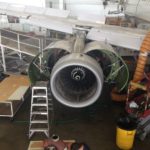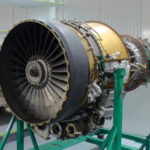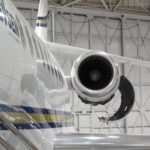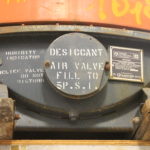Government & Industry – A Global Partnership for Aviation Safety: We Fly Together
Manufacturers, maintenance providers, operators, service organizations and government regulators all work together to ensure aviation safety.
Regulatory Oversight
Aviation businesses in the United States are certificated (i.e., licensed) and regulated by the Federal Aviation Administration (FAA), which derives its authority from the 1958 Federal Aviation Act. The Act, codified by Public Law 103-272 as Title 49 U.S. Code Subtitle VII, and amended frequently, establishes the legal mandate for the FAA to promulgate regulations affecting civil aviation safety and security.
The FAA promulgates rules under Title 14 Code of Federal Regulations (CFR), which control—among other things—the design, production, sales, operation and maintenance of civil aviation products and articles. Other countries have created similar regulatory infrastructures and parallel civil aviation authorities (CAA) to oversee the industry.
According to international standards, the state (country) under which an aircraft is registered controls its maintenance. Wherever a U.S.-registered aircraft lands, the FAA’s rules govern its airworthiness; likewise, foreign-registered aircraft remain under the regulatory system of their registration.
Shared Responsibility
Oversight obligations, however, are not limited to the FAA or other CAAs. In addition to regular inspection visits and audits by government regulators, entities receive frequent audits by their airline customers, third party quality organizations and the repair stations’ own quality assurance teams. Collectively, industry and government work together to provide consistent oversight to ensure continued quality and safety.
International Cooperation
International oversight demands cooperation. Bilateral Air Safety Agreements (BASAs) are government-to-government arrangements that regulate the operation of international air services between two countries. BASAs allow for cooperation in a range of areas including design, production, flight operations, environmental certification, and maintenance. (Click here to read more about how BASAs reduce costs for the aviation maintenance industry. Click here to see the agreements currently in force between the United States and other governments.)
The global body for aviation policy is the International Civil Aviation Organization (ICAO), a United Nations specialized agency created in 1944. ICAO works with 191 different countries as well as global aviation organizations to develop standards to guide development of national regulatory structures. It also releases reports, performs analysis and facilitates interaction between aviation stakeholders world-wide
Regulatory Resources
The Aeronautical Repair Station Association (ARSA) has web-based issue pages dedicated to key regulatory topics. To explore the material and see all of the ways ARSA Works, visit arsa.org.













